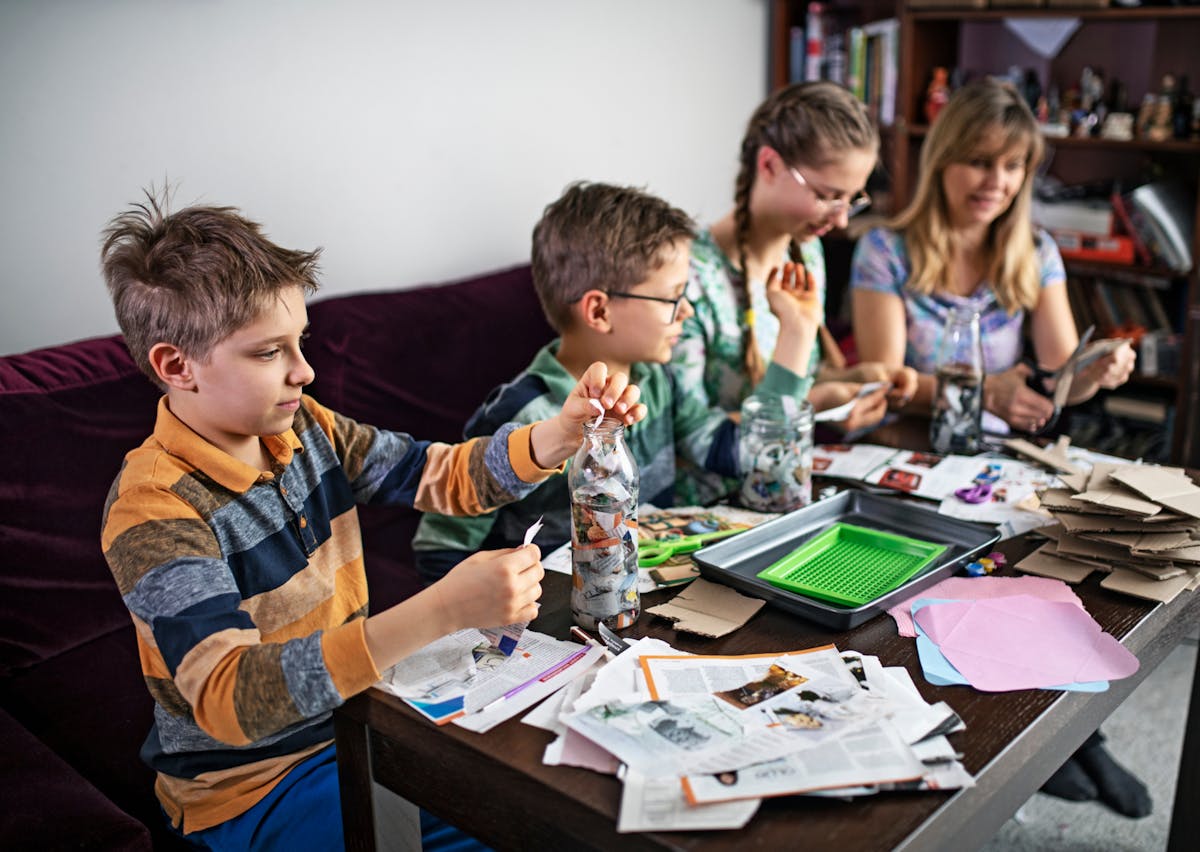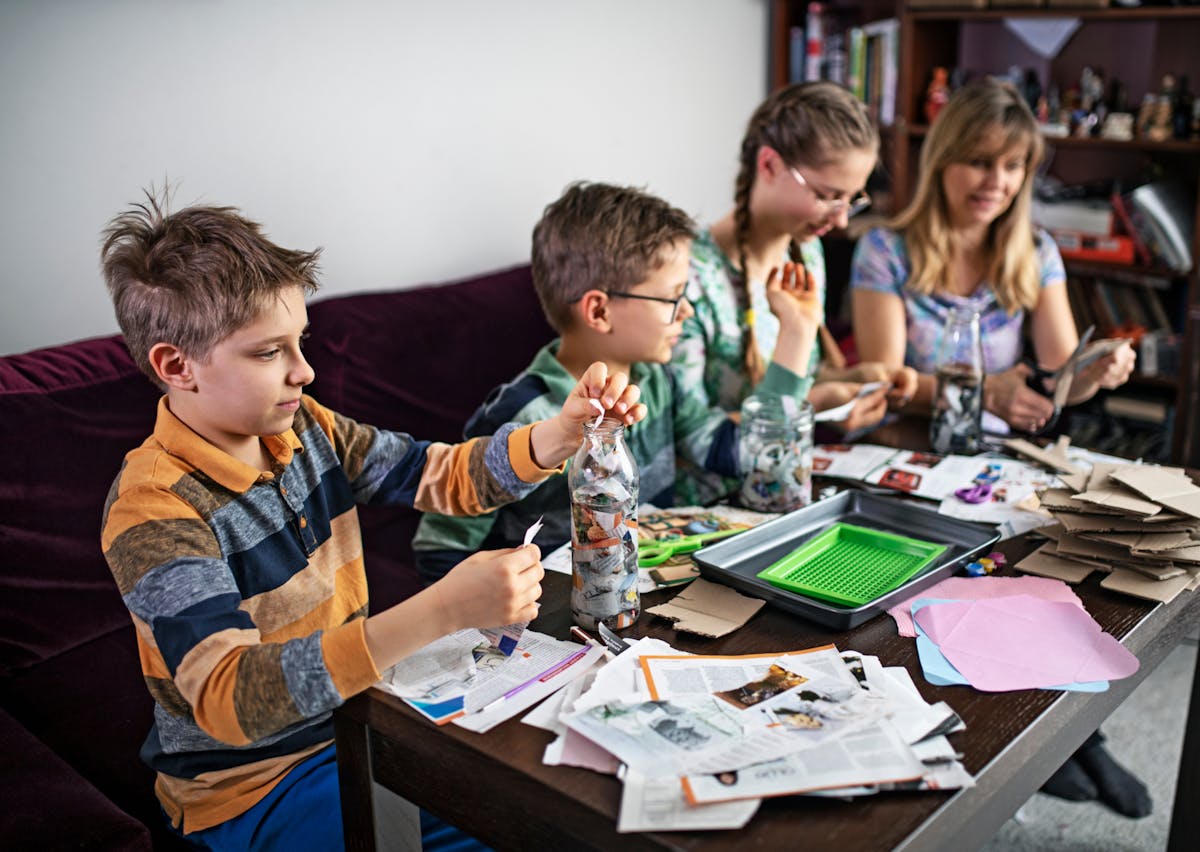March 18th is World Recycling Day! Why not take this opportunity to teach your children all about the importance of learning to recycle, as in this day and age it is so important the we all make small changes to help save the planet.
Whilst children of all ages can get involved with recycling, explaining what it is and the concept of recycling as a whole to a child is not always easy so we’ve got some suggestions to make it fun and engaging! Whilst it might not be first on a child’s list of favourite activities, it is crucial that they learn the importance of recycling at a young age and start to form good habits as early as possible. Just like learning to tie your own shoes or brush your own teeth, we think learning to recycle is an essential life skill, so why not make it fun too!

In recent decades, recycling has become increasingly common around the world so much so that by now the small daily gestures we make have become automatic to our lives. Whilst we may think they are intuitive however, we must remember to teach these little tricks and tips to our children, so here are some top tips to incorporating more recycling into our children’s routine!
Empower and incentivise your children
Make recycling a responsibility and reward scheme for you children, giving them something to strive towards and work for can make a real difference. For example, you could put one child in charge of monitoring the recycling and ask them to check the various bins to make sure that the waste is separated correctly. For each week that all the recycling is sorted correctly, a gold star (or whatever type of reward system you go by) could be awarded!
Knowing that small gestures they make can help the environment and in any case contribute to their entertainment and personal rewards too will push them to engage more and adopt ecological and sustainable practices.
Explain recycling to children
Children often respond better to instructions when they know why they are being told to do something, if you can manage to explain the complexities of recycling on your own then great! But for those looking for a few helpful pointers and examples check out some advice here.
Explain what recycling entails using practical examples from their daily lives: the ball they use to play is made of plastic, and if they separate the various water bottles they can be transformed into other balls with which they can have fun! Talk about the beautiful outdoor spaces they enjoy such as parks and gardens, and how important it is to preserve them and to dispose of waste and recycling responsibly.
Separate collection games
Separating your recycling and general rubbish is an important starting point for educating children about recycling: it is the simplest gesture that we can teach them and it allows children to be more involved if they are able to make decisions on their own. Since we as adults are used to doing it every day and at home it can be easy to forget that it might not be obvious what is recyclable and what isn’t. We can invent different games and activities with differentiated waste, such as:
- Create letter stamps with cut up bits of plastic, paper and cardboard: all you need is a little imagination, some glue, bright coloured paints or ink and a lot of glitter to make everything more colourful. You can cut the cardboard by creating your children’s initials or a particular symbol, glue it on a lid or something hard and dip it in the colour and / or glitter and then print the stamp on a sheet of paper.
- Plastic bottles and aluminium trays can be cut and filled with soil, using them as pots for planting flowers or plants. So your kids will recycle materials and learn how to care for a child-friendly plant at the same time.
- Use cardboard from cereal boxes or toilet paper to make custom crafts. Your children can give free rein to their creativity using toilet paper rolls and cardboard, a brush and a little vinyl glue. Just brush up on a few episodes of Art Attack to get a lot of ideas; by modeling toilet paper you can really create anything.
Recycle creatively
For each category of differentiated waste it is possible to indulge in creativity, giving a new life to objects that we would normally have thrown away.
PLASTIC
With a few empty bottles, you can recreate a bowling evening at home, using them as skittles and trying to hit them with any ball. The colourful bottles of detergent and soap can be cut and shaped to create plastic plants or animals or other objects to put in the doll’s house. The various shapes of the bottoms of plastic bottles can be dipped in ink and printed on the paper, playing to guess what shape it may be. The plastic caps of different colours can be used to create a work of art, gluing them one by one on a white or coloured canvas.
PAPER
With simple paper plates, scissors and colours it is possible to create carnival or Halloween masks of any shape and color. By cutting small pieces of paper to be thrown away, it is possible to create necklaces and wreaths with the help of scissors, coloured threads and glue or a stapler.
Quite large pieces of paper can also be used to create pretty origami, just learn how to fold them the right way (there are tons of tutorials on YouTube to create different types of origami, from the simplest to the most elaborate). Finally, the toilet paper cardboard tube can be painted, glued to a cardboard base and engraved to create a door to make it a very cosy birdhouse.
GLASS
Glass bottles and containers can be painted and filled with wax, turning them into candles of all shapes and sizes. At the same time it is possible to fill them with lights to obtain a personalized lamp to put in the bedroom, or even paint them and use them as a container for your toys.
All these ideas are just ideas that make us understand how much recycling by playing can involve and empower children so that they get used to adopting an ecological and sustainable approach from an early age. And above all: all these activities do not involve spending money, only imagination and creativity!
